Happy Christmas
To all those who are celebrating, 3SL would like to wish you a very Merry Christmas and we look forward to working with you again in in the New Year.

From all at Structured Software Systems Limited. #3SL producers of #Cradle
Noteworthy news articles about Structured Software Systems Limited (3SL) , Cradle, or related customer / industry stories.
This is available for download from the 3SL website.
Cradle-7.6.1 is the first patch release for Cradle-7.6, it is completely compatible with your 7.6 security code. Users with 7.6 do not need a new security code and can download and install without charge. Users on older versions of Cradle such as 7.5.3 or earlier can move to this version as long as they have maintenance. Simply request a new security code from the 3SL support team and get started!
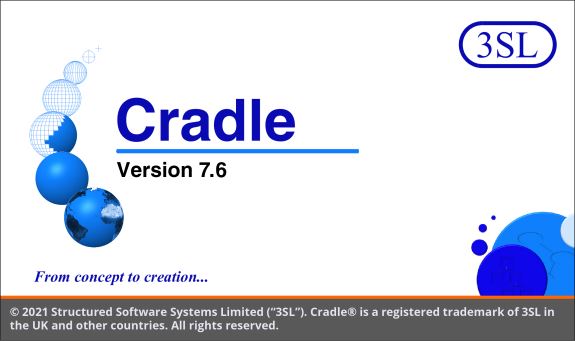
Bug fixes included in the release are:
Cradle 7.6.1 released in October 2021, see what others have said about Cradle or add your own review in Capterra, or SourceForge .
We’ve seen investment from a wide range of market sectors, all of whom have very differing products. However, there are many similarities in the processes that they use, based on their need to manage the same types of complexity.
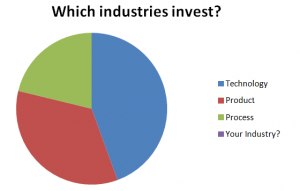
Every project seeks to satisfy a set of requirements in a way that maximises compliance and minimises time, effort and cost. All projects must demonstrate that they have met the requirements by passing a variety of acceptance or validation checks. Therefore, RM (requirements management) is not unique to any individual industry.
Depending how you classify your ‘system’, the concepts and activities of Systems Engineering are also not ‘industry specific’. SE (systems engineering) may sound a little grandiose for some projects, but that depends where you draw your system boundaries. You could be modelling sensor data and control signals coming in, describing how these are manipulated and what outputs are expected. Alternatively you could be describing goods inward, shelving process and booking out.
What constitutes a ‘system’ depends on your industry sector, but the need for careful engineering of systems is common to all sectors.
Using 3SL’s end of year results grouped by sector we have highlighted an interesting change in RM and SE investment over the last year. Whereas aerospace, and military and defence projects had dominated in the past, construction and energy industries have made a heavier investment this year.
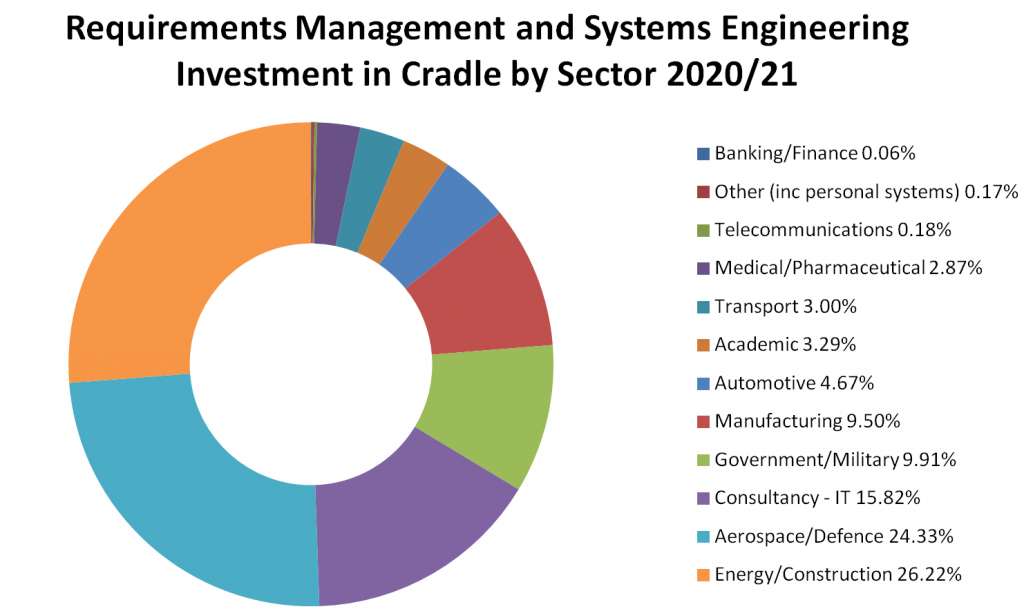
If you make, design, or maintain a product, process or a development area, the answer is likely yes. Projects are most successful when; they can capture the needs of the stakeholders; help plan and develop the solution; provide traceability and reporting at the end. Rather than asking whether you need a RM and/or SE tool, ask why you wouldn’t want to keep control of your project operations.
This first choice is hardly an option at all. How do you explain to your customers and stakeholders that you don’t really know what needs doing? You don’t know what the risks or boundaries are? You don’t know what you think you need to do to get to your undocumented goal?
Electronic or paper documents are a great start. They can support a basic set of activities, the skeleton of a process. At the very least you have notes as to what, how and where your project is going. The major problems are:
It is no surprise that we would suggest that an integrated tool as the most appropriate and efficient way to work; to link all parts of your design lifecycle together; provide the means to capture, store and process those requirements; optionally link in system engineering designs; provide full traceability to the output. (Report, document, views etc).
When selecting a tool it is important that it is a good fit for your process. It must meet the needs of your process without being so complex to use that it becomes self-defeating by transferring large amounts of work to manually maintain your documentation set into large amounts of work to manage the complexity of your software tools. This is the main reason why multiple tools can be a substantial drain on your resources, even assuming that you can actually interface the tools to each other.
Cradle can support some or all of your process… it is your choice. You decide which part or parts of your process could be helped by Cradle’s automation, its ability to link and cross reference information, and its ability to automatically track changes. The schema that you build in Cradle reflects how much of your process is Cradle to support, such as to manage and link:
Still not sure whether you could benefit from an RM / SE tool? We’d be more than happy to discuss your projects and processes and make a recommendation. Book a webinar now.
Play video on YouTube
Due to popular demand, we’ve added another chance to make your output shine with Cradle report creation training – Document Publisher November 2021 course.
“Once you have managed your requirements and development, producing a comprehensive report, automatically based directly on the project data, provides an essential deliverable”

Businesses that have Cradle for their Requirements Management or Systems Engineering process can benefit from additional Cradle tools.
Document Publisher is a Windows® based publishing tool that allows professional documentation to be produced directly from the data within your project’s database. Fully understanding how to configure templates and data manipulation will offer the best output for you to provide to your stakeholders and customers, regulators and other interested parties.
Often the document production task is run by an individual or a very small team. Therefore, this public online course will offer a cost effective way of providing training. You’ll benefit from all the normal learning, but will have the chance to network and share with other virtual attendees from other industries. However, if you have a larger team courses can be tailored and held at your premises / virtually depending on restrictions and requirements at a date and time to suit see here. This will be conducted over four ½ days.
| Date | Subject | Venue | Cost | Pre-Requisites | Provision |
|---|---|---|---|---|---|
| November 22nd – 25th 2021 | Document Publisher | Online learning tutored course. | £510+VAT | PC/Laptop – internet browser & Cradle installed ** | Soft copy course materials, and printed certificate |
If you would like to be kept in touch with the details for this Training Course – Document Publisher November2021 please send an email to salesdetails@threesl.com
All courses are available for direct purchase online.
Continue reading “Public Online Training Course – Doc Pub Nov 2021”
The 12th of May is the anniversary of Florence Nightingale‘s birth. It is on this day that around the world the contributions that nurses make to society are commemorated.

Whilst doctors get due recognition for their life saving work, it is the hugely varied roles that nurses play that underpins the healthcare profession. From writing care plans for patients, assisting with evaluations and tests, checking and administering medicines and injections, setting up blood transfusions and drips, to observing and recording a patient’s condition.
There caring is not just for the patients, they mentor junior nurses and liaise with the relatives and friends of the sick.
Nurses play a huge role in the well-being of people all around the world. Take a moment of thought remember their efforts. This has, and continues to be, immeasurably important during the Covid-19 pandemic.
Nurses we salute you, from 3SL.
Whether you are in change of a nuclear reactor, or run a stall on the market, whether you fly a plane or enter data on a terminal, your safety and your businesses safety is an important consideration.
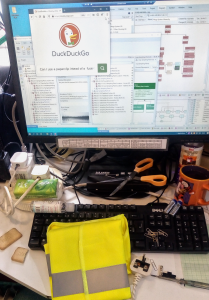
Organisations such as the International Labour Organization (ILO) encourage us to think and plan before a failure can take place. Businesses should take stock plan and mitigate. The fact that your company has a shelf full of risk assessments does not mean you or your business are safe. Shelfware can be more dangerous than a lightweight dynamic risk assessment performed as part of an engrained ethos. The only problem relying on engrained ideals is they may be difficult to prove in court and certainly difficult to time-stamp with a review date! There should be a balance between the two. Well thought out risk assessments, good training and monitoring and good cultural support.
Even if we achieve the grail of a well documented and used health and safety plan, there’s always a chance that things can change and go wrong. If you think something is a ‘bit dodgy’ or you can see an accident waiting to happen, you are as complicit in any failure as someone not following the rules or having considered H&S guidance in the first place. So think STOP if you think something is unsafe, raise your concern, do something about it (if it is safe to do so) but try your best not to let disaster happen.
Whether you are in a ‘dangerous’ area or simply working from home (which may well be more dangerous than a controlled work place – ROSPA say 6000 deaths occur annually in the home in the UK) keep your eyes peeled and watch out for disaster before it strikes.
I’m not sure we could count all the issues in the “Working at home scenario” above. Certainly the mitigation of a Hi-Vis jacket will have no benefit. We can categorically say this 3SL employee’s work station was tidied-up staged before this picture was taken! Reply to this Twitter post with the number of hazards you see.
World Day for Safety and Health at Work 2021 is on the 28th of April 2021, but safety and your health matters everyday.
The tantalising power of quantum computing offers unbounded possibilities to solve some of the biggest problems in computing today. So far the need to keep the Quantum Bits (QBits / QuBits) stable has proved the barrier to quantum computers being widely deployed. Laboratory conditions with super low temperatures and large magnetic fields have allowed the theory to be proved, but limit the practical implementation.
Our current silicon computers rely on simple 0 and 1 storage of bits to represent the data. These ons and offs are electrically, or optically stored and they are either one or the other. QuBits however are neither a 0 or a 1 until they are actually read. They exist in a ‘probability cloud’ between the true or false. The interaction of all the QuBits changes the probability that the bit will yield a 0 or 1 answer when read. This allows a massive scaling of parallel computation considering multiple avenues of a problem simultaneously.
The possibility that standard silicon based binary computers could be made to operate in a quantum state has raised many exciting possibilities. Studies at the Loe D’a Buncum institute hypothesises that a stated proof; that Black is White, or True is False, can be ‘proved’ either way. This uncertainty, they are terming an Argú (derived from the Latin argumentum “a logical argument; evidence, ground, support, proof”). They expect this will be widely applied to Silicon Based Computing Platforms (SBCP).
To paraphrase their research observe the following:
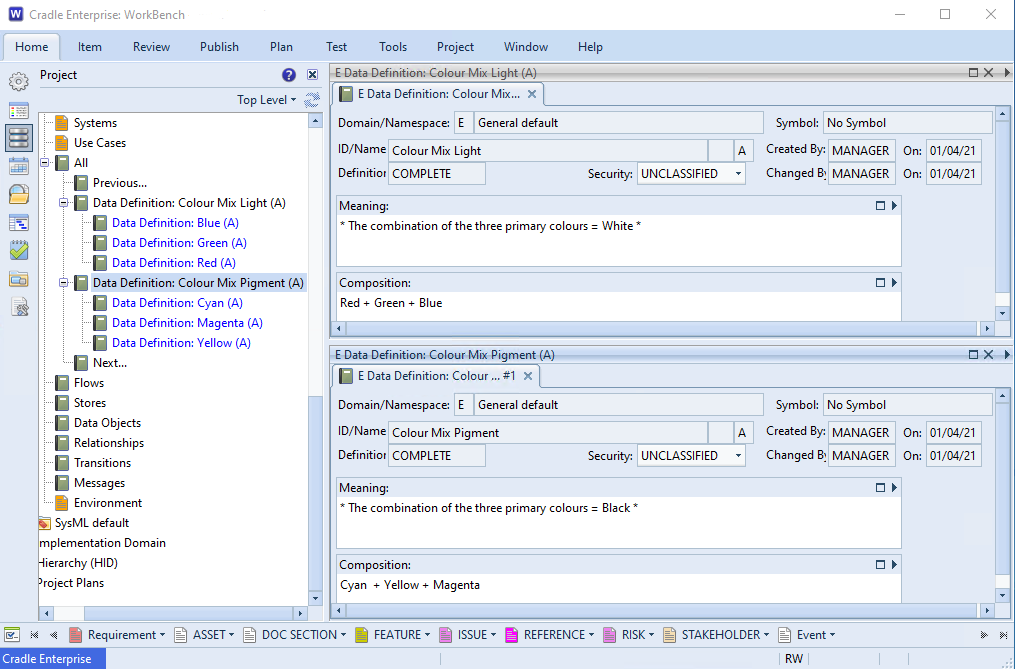
It can be seen that the composition of mixed primary light colours Red, Green and Blue gives White light. However, the same composite calculation for pigment Cyan, Yellow and Magenta gives Black. The Argú in this case is stated as :
Three primary colours mixed = Black = White.
This provides a state that can not be seen as a definitive answer (because there is a missing element – are we talking light or pigment). The key to unlocking and providing the definitive answer is being termed the Clú. This is the missing piece of information that will allow the quantum measurement to be extracted.
Because the concept itself, the Argú is simple to represent in standard boolean logic on a silicon computer, there is no need for any special cooling or magnetic field to retain the uncertainty. The Clú can also be held as a standard concept. The rest of the problem continues to be expressed in multiple Argús but not ‘finalised’. At the point where every possible Argú has been raised for a particular problem, the Clú is combined using standard logic simplified with De Morgan’s laws resulting in the final result.
Both QuBit and SBCP computing offer the gateway to many possibilities, but it should also be remembered that those without a Clú should not attempt to Argú.
The aim of global recycling day is to make us all think about the finite resources we consume and the impact our activities have on our home planet.
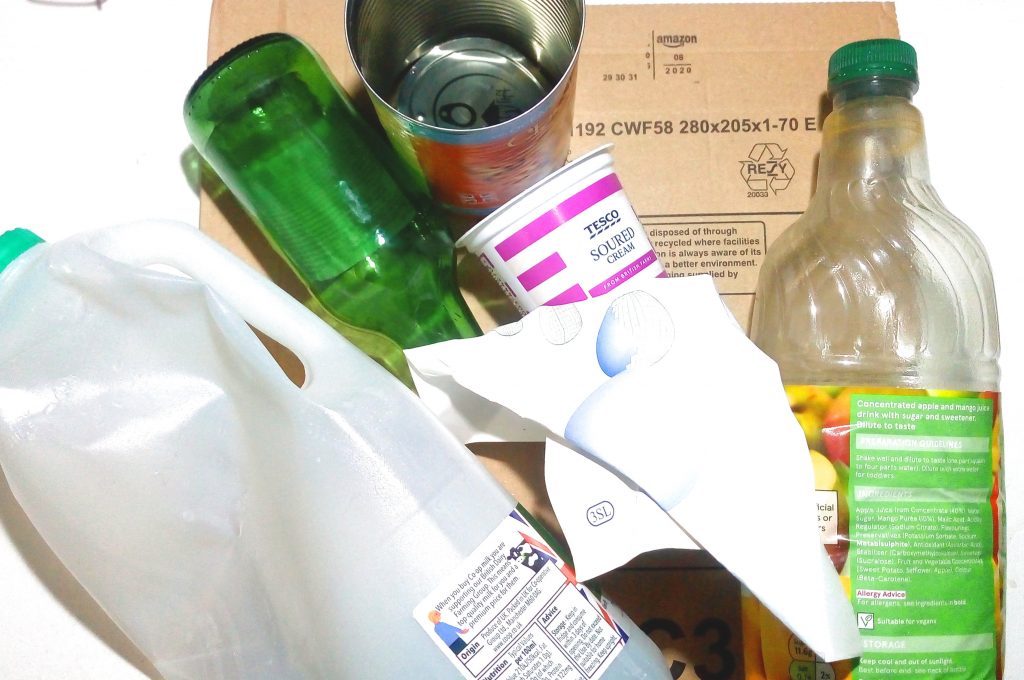
Everything we do has an impact, but we can reduce those effects with a bit of planning and thought. Whether it’s the supermarket making sure its packaging is easily recyclable and clearly marked, or us as an end user choosing how to dispose of the item. Reuse is generally better than recycling. That can range from choosing a washable cup for our coffee verses a disposable (and possibly non recyclable) plastic cup. However we also have to bear in mind the resource and energy used to create that cup. If it lasts 100 washes but is 1000 more costly in terms of energy and resource than the disposable, we’ve not necessarily won.
As designers and producers the way we make and distribute our product has an impact. The intended verses actual use, the quantity of consumables and total energy may be beyond our precise control. However, we can design our product to be energy efficient, use every last part of the consumable and last in terms of durability and obsolescence. When our product comes to end of life, our initial design decisions again come into play. Can the parts be reused, returned, or recycled. Have we constructed it with clip together part, easily disassembled and sorted fixtures, or is a mass of composite materials stuck inseparably into a single unit. Of course it is not practicable to make everything fully reverse engineer-able; but making reuse, disassembly and disposal key needs at the beginning of our product designs, will certainly help. Our supply and distribution chains should also be questioned. Do they operate with returnable crates, or disposable packaging. Does the logistics company we choose have a low carbon footprint. Given these decisions are going to have a fundamental impact, they should be planned and recorded and reviewed the same way as any customer requirement. See the environment not just as an external to your system, but a stakeholder with interests. (You’ve reached the corny product link folks) Tools such as Cradle allow these needs to be recorded, reviewed and reported. If you produce reports keep them in digital form. Whilst the servers and workstations will use power to handle your design, at least you won’t have felled a mini forest to print it out.
So before you get that disposable coffee, think about taking a refillable and long life cup. Before that next global online retailer brown envelope goes in the bin, remove any plastic tags or tape and put it in the recycling. Before that misprint from the photocopier goes in the bin, can the back be reused as scrap paper? Before that washing up liquid bottle goes to be recycled, have you rinsed (used) every last bit of product? We as individuals are responsible as the companies we work for.
When it’s a virtual box of course.

Here at 3SL we’ve been using Hyper-V for most of our visualisation needs. On the whole its done a good job, but as we’ve been moving over to more and more Linux based systems we’ve been looking at alternative solutions to see how far we can reduce our dependence on Microsoft Windows.
We looked at ESXi (from VMWare) – and then sat down after looking at the pricing for high availability, failover, and backup capabilities. Whilst undoubtedly suitable for a critical primary system, the level of cover was more than strictly necessary in our test and development environment.
We looked as Xen (from Citrix) – and while it does plenty out of the box, it was still lacking in certain key functionality we were after. These included replication, failover, load balancing, which, at the time, were available as extra add-ons.
We’ve ended up with Proxmox (for now). It allows us to run a number of Linux services as containers (LXC, not Docker) as well as KVM-QEMU based VM for the few Windows systems we want to keep around (for testing and the like).

Its been handy to create an entirely self contained Cradle cluster behind a single external IP address with load balanced web access and VPN access for clients.
These are statements of fact regarding the installation and use of technologies at 3SL. No affiliation or approval from the third parties mentioned should be implied or inferred.

We’ve changed our mail server slightly. Improving the e-mail verification between ourselves and mail recipients.
Sender Policy Framework (SPF), Domain Keys Identified Mail (DKIM), and Domain-based Message Authentication, Reporting and Conformance (DMARC) have been around for a while. Here at 3SL, we’ve implemented them on our mail server.
SPF defines which addresses are permitted to send 3SL email. DKIM adds a Public Key Infrastructure (PKI) signature. This verifies and authenticates email as coming from 3SL, showing its not been modified in transit, or faked. DMARC combines SPF and DKIM to authenticate the emails and reports any emails which do not conform.
What this means is that all emails claiming to be from 3SL should only be coming from our mail server mail.threesl.com. This should help stop the occasional 3SL email from ending up filtered off as spam. It should also help identify fake 3SL emails as being unsolicited emails.